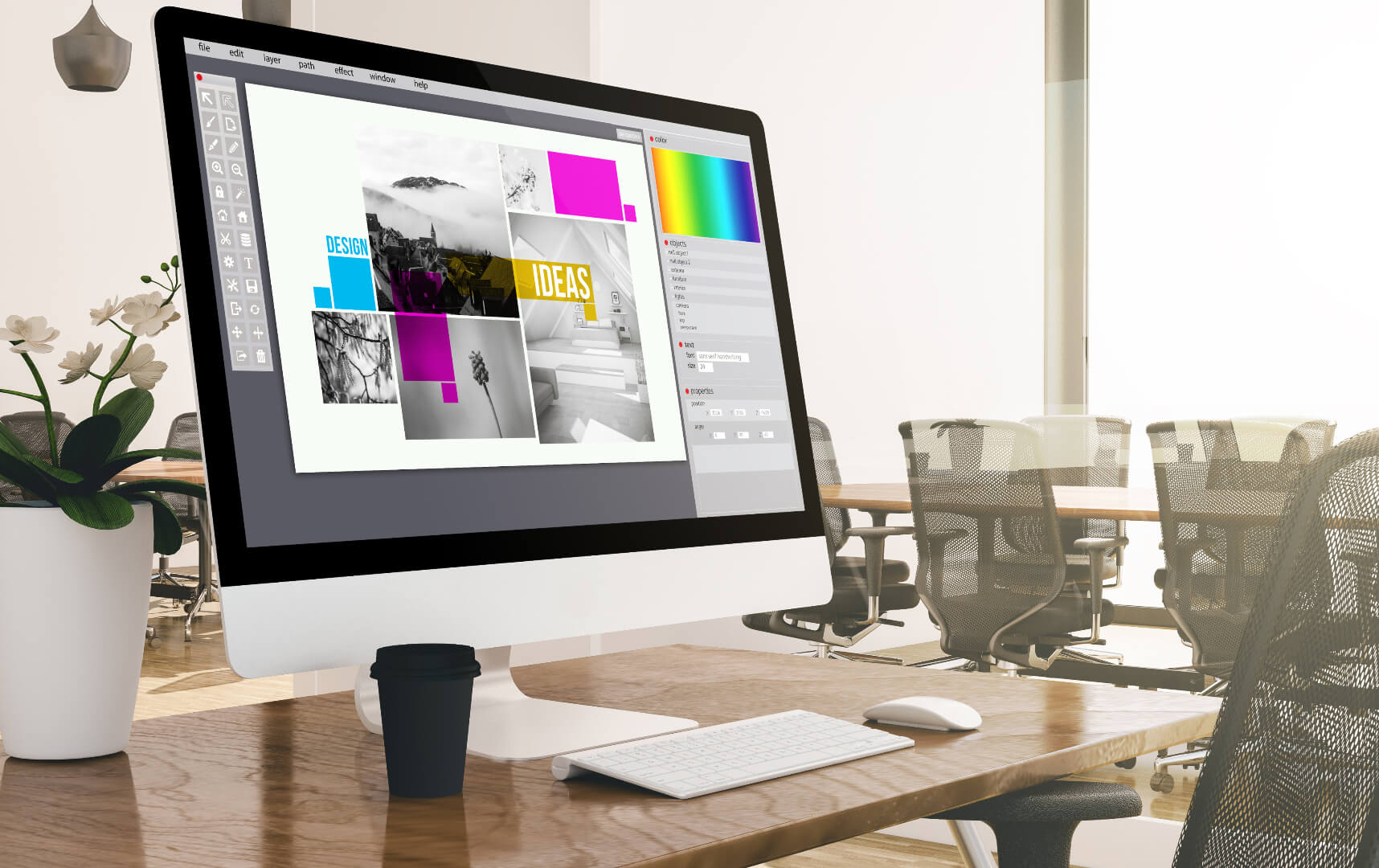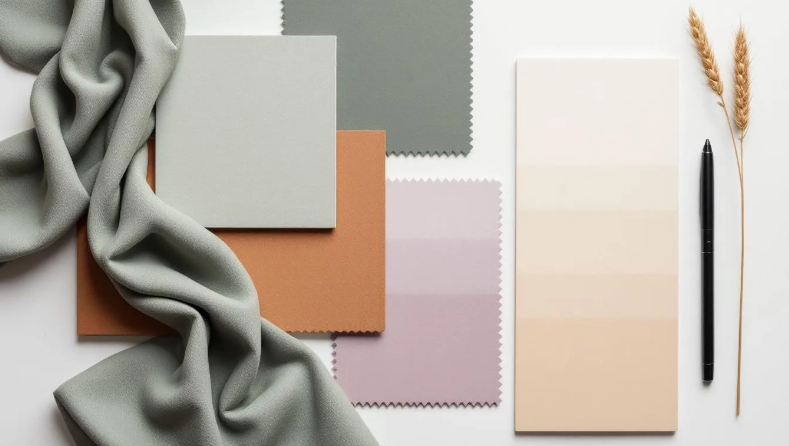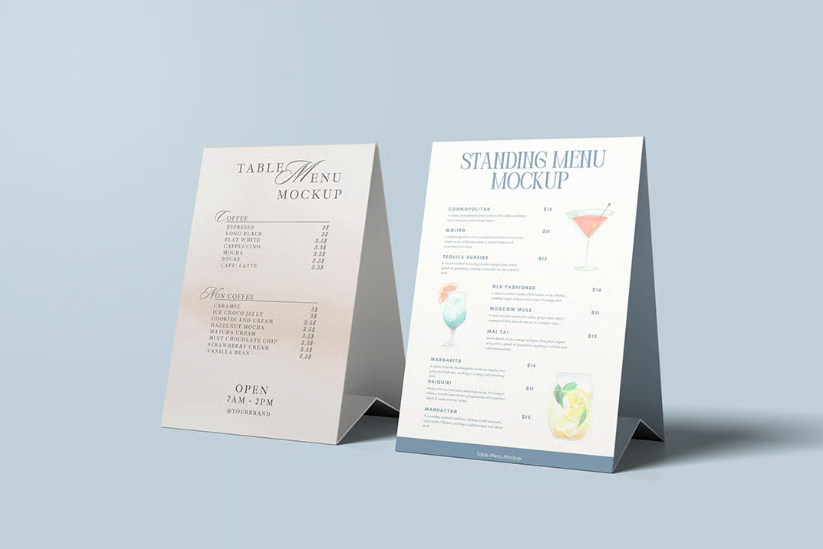When designing a business card that catches the eye and leaves a lasting impression, color isn't just a decorative choice—it's a strategic tool. Colors are more than just decorative; they convey feelings, stir emotions, and profoundly shape how people perceive your brand.
Different colors can invoke various psychological reactions, from the trust and security evoked by a cool blue to the energetic impact of a bold red. Understanding these subtle yet significant effects is essential for any professional to stand out.
We'll explore how colors impact perceptions and evoke emotions, helping you understand how to use this knowledge to design a professional business card that stands out and resonates with your professional identity.
What is Color Theory
The color theory explains how colors are categorized and blended, such as primary, secondary, and tertiary colors. Selecting a suitable color scheme for your business cards is crucial, as it enhances the overall look and makes a positive impression on recipients.
At its core is the color wheel, which shows which colors contrast, complement, or sit harmoniously together. Learning the basics of color theory will help you choose the best color combinations for your business cards and other marketing materials.
Understanding Color Psychology
Studying color psychology is fascinating as it reveals how colors can affect our emotions and behaviors. Each color has the potential to elicit unique feelings and responses. For example, blue has a calming effect, red can be energizing, and yellow can make us happier. Understanding these effects is crucial because colors significantly influence how we perceive the world.
Color psychology is critical in business branding and marketing. A company's choice of colors can affect how current and potential customers perceive it. For example, a brand incorporating green into its logo often conveys associations with nature, health, and sustainability. This can appeal to customers who prioritize these values, drawing them towards the brand.
Companies can communicate their identity more effectively and emotionally connect with their audience by choosing the right colors for their branding materials, including professional business cards. This connection can influence decision-making, build brand loyalty, and ultimately drive success.

How Colors Influence Your Business Cards
Earlier, we talked about how colors have a unique ability—they can influence moods, emotions, and behaviors. Once you understand the meaning of colors, you can make selections that best align with your brand and attract your ideal customers with the help of colors.
For example, people often associate certain brands or products with specific colors. When it comes to your business card design, the right color combination should reflect your brand's values and appeal to your audience, helping your company leave a memorable and lasting impression.
Below are some items to think about when selecting the perfect colors for your business cards:
Stand out from Competitors
Look at their color options. This may help you understand what colors are commonly associated with your industry. While you don't have to use the same colors, it can help you brainstorm potential colors to make your brand stand out.
Understand Your Target Audience
Understanding your target market is important for effective communication. When selecting colors, consider their age group and preferences.
Match Your Audience's Preferences
Everyone has their own unique color preferences, so when choosing colors, it's important to consider your audience's preferences and what they identify with.
Paper Compatibility
It's important to consider how the card stock will affect the appearance of colors. Make sure you choose the right paper stock. For example, Kraft cards will make your colors less vibrant than those printed on glossy card stock.
Reflect Brand Identity
Evaluate your brand personality carefully and choose colors that match your brand identity. Ask friends or others within the industry for their personal opinions.
Colors Meanings
Colors can say a lot about you and your brand before anyone even reads a word. Below, we explore popular colors often seen in business card designs, explain what each color represents, and include examples of brands that use these colors effectively.
Blue: Trustworthy and Credibility
Blue is a widely used color in graphic design. It's a favorite among financial institutions, technology companies, and healthcare providers because it is associated with stability, trust, and professionalism. Blue also conveys reliability and calmness.
These are all qualities that companies want to communicate to their customers. Companies like IBM, Facebook, and PayPal prominently use blue to signal security and trust in their technology. Other companies include Ford, Pfizer, Dell, and Visa.

Black: Power and Seriousness
Black business cards are often associated with elegance and sophistication. This color is popular among the luxury and creative industries because it is associated with exclusivity and high-end appeal.
Black creates a bold, eye-catching statement that conveys professionalism and seriousness. It can enhance other design elements, such as logo colors and typography, making them stand out more vividly. When combined with white, gold, or silver foil, black can enhance the look of a card, making it stand out among competitors.
This business card is ideal for those who want to showcase their sense of style, whether they are a fashion or graphic designer, photographer, or gallery owner. Black is the primary color used by luxury brands and innovative companies such as Apple, Nike, Mercedes-Benz, and Gucci to communicate timeless elegance.
White: Simplicity and Cleanliness
White is a versatile color that complements almost any other color, despite being opposite on the spectrum from black. It's a neutral color that can work for almost any industry, making it one of the best colors for business cards.
Small businesses in the technology and health sectors, upscale retail companies, and the finance industry would benefit from this brand color choice. Adding simple, colorful elements to your white business card design can make it look modern. Gold or silver foil stamping on white business cards can create a sense of authority.
Note: White may be the most conventional choice for business cards, but if you want to stand out, it might not be the best option.
Red: Danger and Passion
Red is a powerful and expressive hue, often associated with energy, passion, and action. It can evoke strong emotions such as love, excitement, and urgency, as well as a sense of danger and warning. Due to its high visibility and impact, red is frequently used in branding to grab attention and stimulate consumer responses.
Design Tip: Red is versatile; brighter shades are more energetic, while darker shades are more powerful and elegant.
Several well-known companies, including Target, Netflix, Coca-Cola, and more, effectively use red in their branding. These companies use red not only to be distinctive in a competitive market but also to evoke specific emotional reactions that correspond with their brand identities.

Green: Health and Tranquility
Green is a color of growth, freedom, and safety. It provides protection from fears and creates a desire for change. It's also associated with nature and environmental responsibility, making it an excellent choice for businesses that prioritize leaving a green footprint.
Also, green is linked to spring and rebirth, making it a suitable option for small businesses that help people start new lives, such as dietitians or tutors. Several companies, such as Starbucks, BP, Whole Foods, Land Rover, and more, use green in their branding to convey their message.
Orange: Positivity and Optimism
Bright and bold colors such as orange are often associated with confidence. They tend to leave a lasting impression on people's minds. Orange is also often associated with creativity, communication, and imagination. It is a popular choice among sincere and thoughtful people.
Adding a touch of excitement can brighten up dull situations and lighten the mood. Orange can be an excellent choice for a business card meant for someone who is crafty or artistic.
According to color psychology, orange could be a great color for those in trendy fields like nonprofits or tech startups. Several well-known businesses, including Nickelodeon, The Home Depot, Fanta, and ING, effectively use orange in their logo design and branding to capitalize on its vibrant and energetic qualities.
Yellow: Happiness and Creativity
Yellow is a bright and striking color that can create feelings of happiness and liveliness. It is commonly associated with intelligence, creativity, and originality. When used in branding, yellow is often used to capture attention and generate a sense of positivity and energy. Also, yellow can stimulate the appetite, making it a popular choice for food-related businesses.
People with high intellect often prefer yellow, which is said to improve memory and concentration skills. Yellow can also make decision-making easier and relieve nervousness, making it an excellent choice for any business.

Purple: Royalty and Spirituality
Purple is often associated with royalty, nobility, luxury, and power. It's also linked to mystery, magic, and spirituality. The purple dye is rare and expensive, so it's primarily used by royalty and the elite, adding to its connotations of extravagance and exclusivity.
Purple is a unique color that combines the vibrancy of red with the tranquility of blue. Whether you choose to make purple the focal point of your logo design or use it in a subtle yet sophisticated background, this color can help you make a great first impression.
Although purple is not as commonly used in brands targeted at women as pink, it is still frequently seen as a feminine color. Purple can be an excellent choice for your brand if your small business specializes in beauty, skincare, health and wellness, non-profit organizations, or luxury retail.
Many popular brands, including Yahoo, Hallmark, Twitch, FedEx, and more, use the color purple in their logos and branding to differentiate themselves and convey unique brand values.
Business Card Color Combinations
Some popular and effective color combinations for business cards include complementary colors, analogous colors, and triadic colors. Selecting the right color combinations can create visual interest and help your business card stand out.
Complementary colors sit opposite each other on the color wheel, such as blue and orange or red and green. Analogous colors, such as red, orange, and yellow, are next to each other on the color wheel. Finally, triadic colors, such as red, blue, and yellow, are evenly spaced on the color wheel. Each of these combinations can create a visually appealing and unique look for your business card, helping it stand out in a sea of more mundane designs.
Conclusion
Your unique style shines through in your choice of colors for branding and business card design. Although there's no one-size-fits-all color for business cards, it's crucial to consider your company's logo, products, and services to find the style that best represents your business.
Get a free sample pack to see color schemes and paper stock options to help you decide on the card quality that best complements your design. The right combination of colors can make a strong impression and effectively convey your business's values. Choose colors that authentically reflect what your company stands for.




